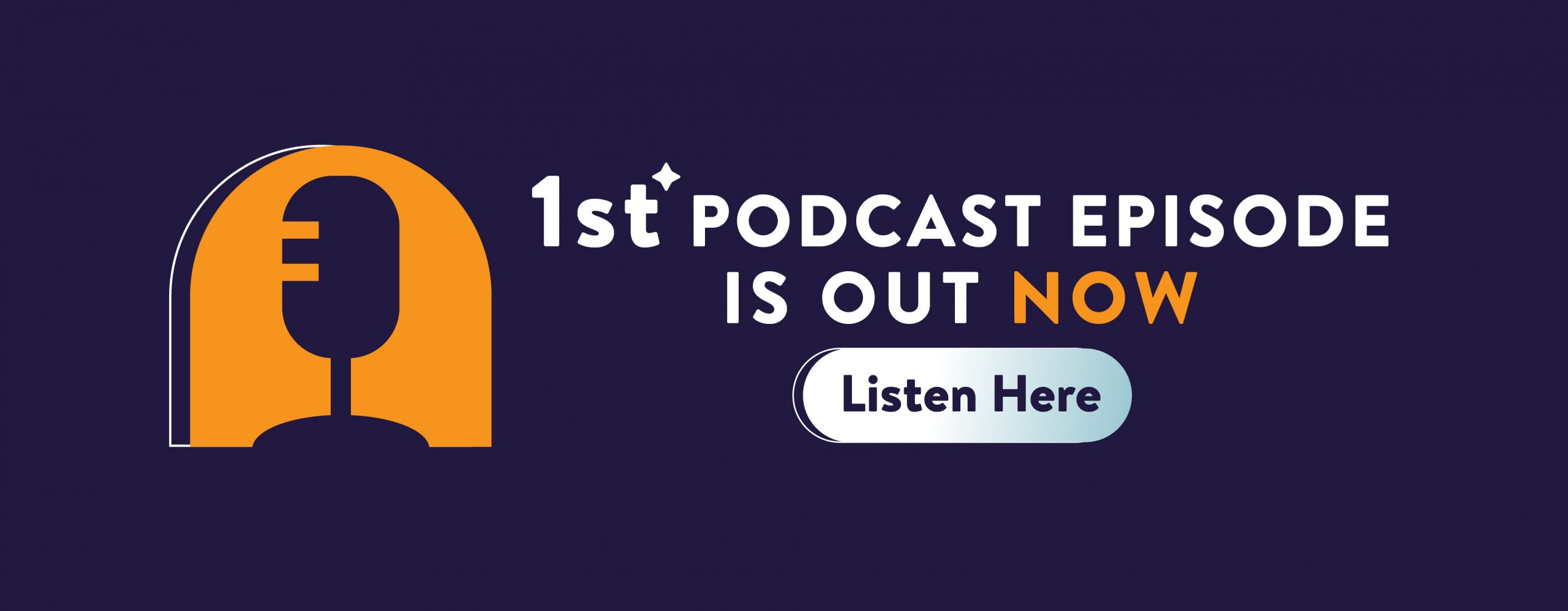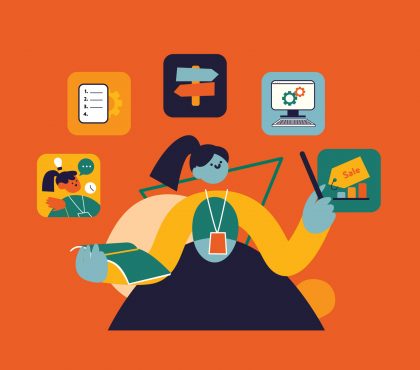Demand for digitalization and remote work during COVID-19 requires employees to gain more different skills to adapt to significant changes. A recent study states that nearly 70% of companies provide more skills training than before pandemics to support their employees. Are your L&D team still behind in the race of upskilling and reskilling the workforce? This article will help you get started and catch up with the trend as soon as possible.
Upskilling and reskilling: what are the differences?
Both upskilling and reskilling are becoming the fundamental L&D strategies; thus, it’s necessary to tell apart the two terms:
- Upskilling involves enhancing or expanding employees’ knowledge and skills that assist in improving their performance in current roles.
- On the other hand, Reskilling means equipping them with skills required for a different role in the business.
Take the position of sales representative, for example. When they join the training on how to use virtual conference tools to keep in contact with their customers, it’s upskilling. In contrast, reskilling occurs when they take the social media training to be in charge of marketing positions.
Another example of reskilling is when a retailer moves its model from an offline store to an e-commerce site. Therefore, they have to equip their customer service staff with new skills on how to interact with customers through online channels.
How do upskilling and reskilling benefit your business?
Following are 3 key points that investing in reskilling and upskilling programs will bring advantages to your business:
Higher productivity and job satisfaction
Effective reskilling and upskilling programs support individuals to do their work better with higher productivity. Furthermore, They often include cross-functional collaborative learning, which helps build up strong teams. Consequently, both can increase employees’ confidence and satisfaction at work, making them feel more encouraged to target business objectives.
Higher employee retention rates
Upskilling and reskilling are supposed to be an investment in employee professional development and growth. It also helps to improve their motivation so that they are not likely to leave your company. This is fundamental for your business’s sustainable workforce.
Besides, the decrease in employee turnover rate also benefits your profit margin because it reduces the hiring cost over time. A Gallup report states that the cost of new hiring can vary from one-half to double the existing employee’s annual salary.
Enhanced company culture and brand
Upskilling and reskilling the workforce creates a positive brand image for your company. You can be well-known as an ideal employer who cares about its employees’ satisfaction and success. A strong reputation will easily attract qualified and skilled employees to join your company.
5 best practices of the L&D team for upskilling and reskilling the workforce
Planning upskilling and reskilling programs can be a huge challenge if your L&D team hasn’t done this before. You know that the training needs to truly make an impact by providing useful content. But how? Here are our recommendations that every L&D team should follow
- Analyze skill gaps and identify needs
- Develop internal career pathways
- Advance a blended learning experience
- Provide “just-in-time” performance support resources
- Promote your L&D upskilling and reskilling activities
Analyze skill gaps and identify needs
Most L&D teams skip this initial step as it takes quite a time. However, making a plan without knowing what exactly the employees need to get will make the training not engaged and wasted.
Comprehensive skill gap analysis allows you to identify precise required knowledge and skills for business today and in the future. That means the assessment is for both short-term and long-term purposes as well. You should make skill gap analysis quarterly and annually so that the evaluation can be up-to-date with the business’s needs.
It’s also noted that the analysis required a variety of data sources to get a fair view of the situation. Therefore, you should involve not only employees but also colleagues, supervisors, managers, etc., to gather information.
Learn more details about skill gap analysis at:
Develop internal career pathways
Does each of your organization’s employees have a personalized career pathway, or learning pathway, to go forward? If not, unfortunately, 55% of them refer to seek a new job within the following year.
A robust career pathway, with reskilling and upskilling in detail, plays an essential role as a GPS for your employees. This is a direction for employees on how they improve their current skills and develop new skills for another position. In other words, employees can know where they are now, where they want to be and how to go there.
To give you an idea, think about a learning pathway for freshers forwarding to the software engineer position. This requires employees to join some training courses on in-demand programming languages, both basic and advanced. If it forwards to a managerial role, the training should include management and leadership skills, communication, etc.
Advance a blended learning experience
Upskilling and reskilling the workforce is not necessary to be traditional classrooms or online courses. Think outside the box and make use of the blended learning approach to diversify how to deliver the training.
We suggest some common training formats improve engagement below:
- Cross-training: it’s suitable for reskilling projects as showing how to take on different roles within the company.
- Stretch assignments: a project requiring a higher-level skill set is a great way to grow employees’ skills through practice.
- Mentorship programs: this is a personalized approach to upskilling training. You can also try reverse mentoring programs.
- Apprenticeships: this hands-on approach will drive employees to take the training as learning in the flow of work
- Volunteer: employees have a chance to work outside of organizations to gain new skill sets that can apply to their industry.
Regardings this, team leaders have to take accountability and advocate for the learning activities of members. Organizations should train leaders to prioritize and make an effort to follow up the upskilling and reskilling training. They also need to be involved in their members’ training and careers pathways.
Recommended reading:
Provide “just-in-time” performance support resources
Sometimes, the employees’ needs for any tool or technique can arise that is not following the pre-scheduled training courses. So, you can continuously build the just-in-time performance support resources to meet that needs.
One of the best ways is to implement digital platforms or apps for knowledge resources that employees can access on their mobile devices. For example, an instant messaging app can provide guides on a new process—a learning hub in which they can find and share job-relevant information.
Promote your L&D upskilling and reskilling activities
We all know about the importance of upskilling and reskilling efforts. But it’s also not useless if employees are not aware of your training activities.
You need to communicate recent reskilling and upskilling programs to leaders and share how the training can benefit their work. This also helps key stakeholders to prepare optimal support if necessary.
Here are some tips for communicating to effectively boost participation for upskilling and reskilling the workforce:
- Having a yearlong campaign planning that highlights all L&D activities with success stories. Detail it into each quarterly plan, and each quarter will focus on different aspects. For example
Q1: Talk about the company’s talent strategy with upskilling and reskilling
Q2: Introduce internal and external available programs
Q3: Training success stories from associates
Q4: Empower associates with vision and values. Creating engaging content to encourage the learning culture within the company and build the company’s brand externally. You can work closely with HR or communications teams for the best content, following your training calendar.
To sum up
Upskilling and reskilling programs in L&D strategy are not a one-then-done but a continuous process. Learning & Development teams have to lead the way to improve employees’ capabilities to adapt to the changing context. Hope that our guides on best practices can be supportive for your upskilling and reskilling workforce implementation.
Read more:

Sean Bui, the founder and creative director of F.Learning Studio, is a respected leader in the e-learning and multimedia production industry. With over 10 years of experience, he has dedicated his career to helping organizations create engaging and impactful learning experiences.
Under his leadership, F.Learning Studio has grown into a trusted partner for organizations in the education, healthcare, and corporate training sectors, producing over 2,000 minutes of educational animation.





